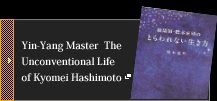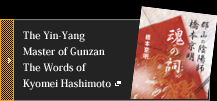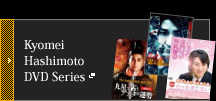
Nine Star Ki Astrology is a fortune-telling method that uses the concept of nine circulating stars. They start with the “One White” star and end with the “Nine Purple” star. These stars are distributed based on a person's birthday combined with the Oriental zodiac and Eastern concepts of Yin-Yang and the five elements.
The “One White Mercury” star represents water, “Two Black Saturn” represents earth, “Three Blue Jupiter” and “Four Green Jupiter represent wood, “Five Yellow Jupiter” represents earth, “Six White Venus” and “Seven Red Venus” represent metal, “Eight White Saturn” earth and “Nine Purple Mars” is representative of fire.
These nine stars rotate through their positions in a defined fashion and a person's fortune is told by looking at the association of the nine stars defined by the four "times" - year, month, day and hour, with the signs of the zodiac.
Ki Astrology considers "ki" to be the energy of nature that governs the functions of the universe and is a fortune-telling method that mainly uses a person's individual year, month, day and hour of birth to predict their overall fortune.
This is a statistical philosophy that spans three thousand years of ancient Chinese history, but the name "Four Pillars of Destiny" is not seen in original Chinese texts and is uniquely Japanese.
The four zodiac signs for the year, month, day and time a person was born are called "pillars" and predict that person's innate potential. The ten signs of each pillar are called the celestial stems and the twelve signs of the zodiac are called the earthly branches. Further, the celestial stem of the year pillar is called the ”year stem” (and sometimes the year pillar celestial stem) and the earthly branch of the month pillar is called the “month” branch.
The effects of the other celestial stems and earthly branches on the “day stem” are examined statistically with the outcome used to predict specific events. Basically, the Four Pillars of Destiny use the year, month, day and time of a person's birth to determine the celestial stems (i.e. ten calendar signs) and earthly branches (i.e., twelve signs of the zodiac) and use the Yin-Yang and five elements expressed in the eight characters to derive the past, present, or future fortune of a particular person, their ancestral parents, their family and their children, or to predict the number of children the person may have.
The Kyomei Hashimoto Four Pillars of Destiny can make about 400 million calculations.
This astrology technique is unique to Kyomei Hashimoto, whose mastery of complex calculations and statistics gave rise to the concept.
Far surpassing Four Pillar Astrology that calculates statistics with around 400 million alignments, Mr Hashimoto’s Five Pillars Astrology technique has been considered the most accurate as it calculates 3.6 billion aligned statistics based on the five sexagenary cycles.

The current form of Qi Men Dun Jia divination has its origins in theories developed in China during the Qing and Ming Dynasties.
In Japan, it was used by the Onmyoryo (Ministry of Divination) founded by Emperor Tenmu as a method for determining the direction in which to move when scheming in war tactics, battles to rule the country and settling affairs.
Qi Men Dun Jia was spread as a method of determining the fortune of moving in a particular direction, the objective of territorial expansion during the Warring States period. This was then altered to fit modern times and became a behavioural method, where moving in a lucky direction at a particular date and time means to actively pursue good fortune.
This type of fortune telling appeared in China about 2,000 years ago. Based on the time of day, this method uses astronomical information and the Chinese sexagenary cycle for divination.
A simple astrolabe called a shikiban was used to derive astronomical information based on the time of day.
The 12 Zodiac signs correspond to the time, the 12 guardians of the months refer to the season and the 10 heavenly stems and Zodiac correspond to the day.
These values are drawn on a divination chart and the fortune is read.
Put simply, this method allows the user to concretely divine the good or bad fortune attached to small everyday events, under what conditions that fortune will come to pass and when it is expected to occur.
Moreover, this robust method lets one see where and under what conditions the other party is, whether a part of his or her body is afflicted with illness or otherwise sluggish and many other rich insights.
I-Ching is one of the three methods of Chinese divination said to have been practiced during the Zhou Dynasty in China.
It is based on the theory of Yin and Yang, represented by symbols which combine to create eight trigrams (hakke) and further combine to form sixty-four trigrams. Each trigram possesses a name and through this system the universe in its entirety is explained, from its creation to its development and eventual decline.
It is said that the ancient sage Fu Xi (Futsuki) created the eight trigrams, King Wen of the Zhou Dynasty provided explanations (kaji) for each hexagram, the Duke of Zhou added commentary (kouji) to these hexagrams and Confucius elucidated the principles (juyoku) there of.
However, it appears that this material was actually compiled between the end of the Warring States period and the middle of the Han Dynasty.
Neo-Confucianism was the official philosophy of the Edo period in Japan. Because it placed a heavy emphasis on divination, this practice has been handed down over the years. These ideas eventually formed the basis for the I-Ching, one of the five classic texts of Confucianism. Divination as it is known today refers to the art of divination based on the I-Ching. Birth date can be used as a basis for predictions as well.
This type of fortune telling is based on the interaction and conflict between the 10 celestial stems (calendar signs) and the 12 signs of the Chinese zodiac.
This fortune telling technique makes predictions about an event by looking at the relation between the celestial stem and Chinese zodiac sign that apply to the date and time of the event.
Specifically, the technique begins by determining the sign that applies to the date that the prediction relates to and then determining the sign that applies to the time. The interaction and conflict of the signs is analysed to predict the luck and chances of success associated with an event.

This is a philosophy of the environment that dates to the Han Dynasty in China.
Wind corresponds to things that are invisible to the naked eye, such as the flow of Chi, the flow of energy and things you can physically feel against your body, such as air. Water corresponds to all the water in the natural world, including water contained in the air.
This thought process was used to determine whether the placement of something like a city, dwelling, building, or grave would bring good or bad fortune.
Feng Shui means "to assess land." The art of Feng Shui is believed to have reached Japan along with Buddhism, even predating the dispatch of Japanese envoys to Sui and T'ang China. However, once here, it evolved into a uniquely Japanese style of cosmology and divination for residential homes.
It is said that the locations of ancient Nara and Kyoto were in accordance with Feng Shui and that traces of Feng Shui thinking can be glimpsed in the later construction of Kamakura and Edo by their respective shogunates. This geographical use of Feng Shui refers to Taoist topography and is characterized by a mix of unlucky points to be avoided (a river in the east, a broad avenue in the west, a basin in the south and a hill in the north).
Palm reading is one type of divination that reads information about someone's personality and future based on the size and shape of palm lines.
Palm reading is said to originate in India, from where it spread to China, Egypt, Greece and Ancient Israel. At each migration, it is said to have been researched and adapted in new ways.
In recent years, medical practitioners have drawn attention for their study of palm reading and its implications for illness. Research is currently underway to probe that connection.
Palm reading is believed to have reached Japan in the Heian Period by way of China. Later in the Taisho Period, Western palm reading techniques reached Japan where they were practiced side-by-side with Eastern palm reading techniques. Today, Western palm reading predominates:
A palm is read in the following sequence:
1) The shape of the hand is examined;
2) The length and shape of the fingers is examined;
3) The shape and color of the fingernails is used to determine overall health;
4) The thickness and firmness of the raised parts of the palm is examined;
5) Palm lines are read and interpreted;
6) Balance of the hands is examined in contrast with the rest of the body and overall posture
7) The location of any birthmarks is assessed. These points are observed and the person's fate is read
Kasou (the art of drawing hidden knowledge from the form and structure of a house) is based upon the ancient Chinese wisdom of Feng Shui, a practice more formally known as "Feng Shui Geomancy".
It arose from the practice of analysing geographical features, climate, the lay of the land and other natural aspects in order to construct houses in the most auspicious way possible.
During Japan's Edo Period, by allocating the properties of Yin and Yang and the five elements (wood, fire, earth, metal and water) in a tatami building, Kasou practitioners could determine its qualities of harmony or discord.
Nowadays, although many systems exist for subdividing the various directions (Nine Star Ki, Heavenly Stems and Earthly Branches, Eight Directions, Twenty-Four Directions and so on), all are based on the orientation of the entrance of the home.
Regarding the distinct definitions for "chisou" (geographical knowledge) and "kasou", "kasou" will generally be used as the comprehensive term. The rearranging of rooms is called a "theory" in the study of divination.
Oso-gaku (grave divination) has its origins in Feng Shui geography that began in China in the B.C. era and is classified into House Feng Shui and Grave Feng Shui. The former transformed into Kaso-gaku (house divination) and the latter into Boso-gaku (grave divination).
Grave Feng Shui emphasizes the selection of the grave site over how the gravestone is placed. Followers aim to ensure the prosperity of the deceased's descendants and the success of their family by erecting the grave site in a lucky spot.
There is a theory that Prince Shotoku, who was the origin of Buddhism in Japan, brought this Feng Shui geography to Japan, which is why a good deal of consideration was given to Feng Shui concepts when many imperial tombs, Shinto shrines and Buddhist temples were erected.
This form of divination uses a person's name to determine their future. It originates in handwriting analysis used by the Han Dynasty that was itself based on the ancient Chinese system of the cosmic dual forces and the five elements.
This technique influenced Japanese handwriting divination, which used stylized name symbols (kao) and signatures. After the Kamakura and Muromachi periods, the influence of Chinese divination and the five elements cosmology gave root to this unique divination by personal name (first name and surname).
Today, names are held to have a dominant influence on a person's fate, so people pursue name changes or use characters with a size more conducive to good fortune.
There are six types of name divination based on:
1) The meaning of the characters
2) Combinations of the number of strokes
3) Combinations of odd and even stroke counts
4) The sound of the characters
5) The total number of strokes
6) Relationship to the five elements cosmology
Physiognomy can extend to more than the face alone and can refer to a person's whole "form," including their interior and exterior features.
Today however, the study of physiognomy generally refers only to analysis of the face.
Physiognomy is believed to have been first developed by the Aryan culture in India and further studied in ancient Greece by Pythagoras and Plato. Aristotle is considered to have established the foundation of ancient Western physiognomy.
The Song Dynasty in China studied the appearance of the body as a form of medical diagnosis. Over time, that method came to be used as divination about a person's fate. This method reached Japan in the Muromachi Period.
Contemporary physiognomy generally groups faces into three types:
1) The healthy (round face)
2) The strong and muscular (square face)
3) The sensitive (oval or inverted triangular face)
The face itself is divided into:
1) The upper zone (from the top of the forehead to between the eyebrows)
2) The middle zone (from below the eyebrows to the nose)
3) The lower zone (from the tip of the nose to the chin
These "three zones" are likened to the "three powers" of Heaven, Earth and Man.
Physiognomy also has deep correlations with the diagnosis of illness, as the colour of the face can be used to identify sickness. Acts such as shaping one's eyebrows are also connected to better fortune.

Sukuyou astrology, which is based on the motion of the moon, originated in India, the cradle of civilization.
Every 27 days the moon makes one revolution through the celestial sphere and there are 27 corresponding zodiacs signs, one for each day. These are used to divine the character, nature and fortune of people born on those days.
This astrological system passed through China before coming to Japan, where it is said to have been spread by the great Buddhist teacher Kukai. For 800 years beginning in the early Heian period, Sukuyou was used to guide even the rituals of the imperial court.
The 27 zodiacs are called:
| Bond (Roushuku); | Star (Seishuku); | Tail (Bishuku); |
| Stomach (Ishuku); | Extended Net (Choushuku); | Winnowing Basket (Kishuku); |
| Hairy Head (Boushuku); | Wings (Yokushuku); | Dipper (Toushuku); |
| Net (Hisshuku); | Chariot (Shinshuku); | Girl (Joshuku); |
| Turtle Beak (Shishuku); | Horn (Kakushuku); | Emptiness (Kyoshuku); |
| Three Stars (Shinshuku); | Neck (Koushuku); | Rooftop (Kishuku); |
| Well (Seishuku); | Root (Teishuku); | Encampment (Shitsushuku); |
| Ghost (Kishuku); | Room (Boushuku); | Wall (Hekishuku); |
| Willow (Ryuushuku); | Heart (Shinshuku); | Legs (Keishuku). |
The zodiacs are primarily used for seasonal events.
The 28 Mansions are composed of the 27 Mansions plus the "Ox mansion."
When Shukuyou (mansions and days) astrology first emerged as a calendar, it had 28 mansions. This is because the calendar was made by dividing the orbit of the moon around the celestial sphere (the moon's path) over one month into 28 parts.
However unlike the other mansions, the "Ox mansion" would always appear at noon in each of the 27 other mansions.
When the concept came to China and emerged as a fortune-telling method, it was influenced by the Dun Jia method of astrology and the Ox mansion was excluded just like "Jia", the first of the 10 celestial stems.
This method came to be used in Japan during the Tokugawa period.
It is used mainly for everyday fortunes or seasonal events and the use of time differs depending on the event.
Purple star astrology (Chinese: zi wei dou shu) is a form of fortune-telling derived inductively from astrological and natural phenomena by the ancient Chinese.
Chen Tuan, who lived during the Song Dynasty, wrote about its origins. "Purple" refers to the North Star and "star" refers to the stars of the Southern Big Dipper.
Fortune-telling methods that use these stars of the Southern Big Dipper to calculate fortunes are called "Big Dipper calculations" (Chinese: dou shu) and are based on the lunisolar calendar.
Purple star astrology uses a person's date and time of birth to produce their "life compass" (purple star astrology horoscope). The purple star astrology "life compass" is based on personality analysis research conducted by the Chinese over thousands of years. There are fourteen stars and fourteen personality traits that combine together to create a complex "life compass" with 144 combinations in total. The basis of a person's fortune is calculated by the positions of the stars.


This is used for miraculously improving luck and telling accurate fortunes through the utilization and proper application of the Four Pillars of Destiny, Zi Wei Dou Shu (Taiyi style), Liu Ren Shen Ke, and Qi Men Dun Jia.






































